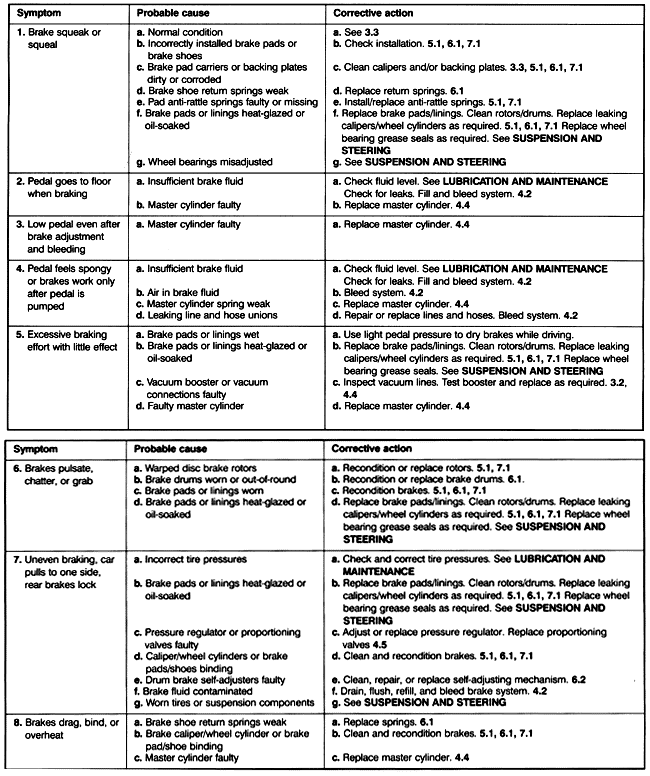3.1 Basic Troubleshooting PrinciplesAs with any troubleshooting, careful analysis of symptoms is the key to isolating and identifying braking problems. Reliable brake system performance depends on creating and applying hydraulic pressure in the system. Brake performance is affected by three things: the brake fluid, the system's ability to maintain pressure, and the friction components. Air in the brake fluid, because it is compressible, will make the brake pedal feel spongy during braking, and may increase the pedal pressure required to stop the car. Moisture in the brake fluid will lower the fluid's boiling point; the fluid will more easily boil and create air bubbles in the fluid. Moisture or other contaminants in the fluid will cause internal corrosion and premature wear. Seals are used throughout the system to maintain hydraulic pressure. Faulty seals or wear and corrosion on the sealing surfaces will reduce braking efficiency. A symptom of this condition is the need to pump the pedal to get good braking. Simple leaks at the brake line or hose unions may cause the same problems. Worn or contaminated brake linings are an obvious cause of poor braking performance. The friction material is slowly consumed by use of the brakes and must be periodically replaced. Also, pads and linings which are oil-contaminated or glazed due to overheating cannot produce as much friction, and stopping distances will increase. For ABS-equipped cars, most of this same troubleshooting information applies. For normal braking, the ABS is not activated-ABS activates automatically only when the brakes start to lock during hard braking or on a slippery road surface. When the ABS is activated and is modulating brake pressure to one or more wheels to prevent lock-up, there may be a pulsation in the system which can be felt through the brake pedal. This condition is normal. When troubleshooting the brake system, consider how quickly the problem occurred. Sudden brake system failure is most likely caused by the failure of one component, such as a burst hose or a disconnected vacuum booster vacuum line. A gradual decline in braking efficiency probably indicates the general state of wear in the system, and more than one component may need to be repaired or replaced. Table a lists symptoms of problems commonly associated with the brakes, their probable causes, and suggested corrective actions. The numbers in bold type in the corrective action column refer to numbered headings in this section where the suggested repairs are described. Table a. Brake Troubleshooting
|
